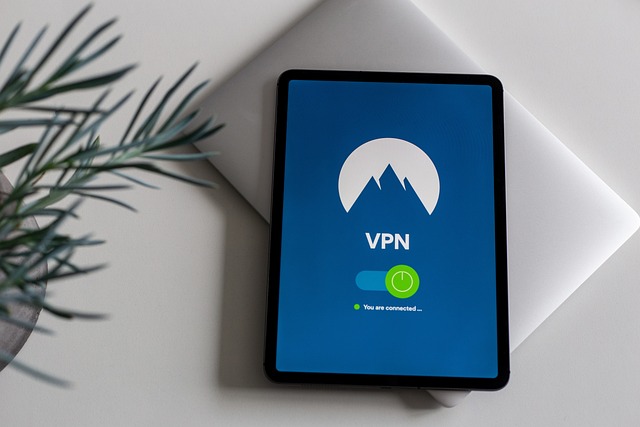Essential Mobile Security Practices for Digital Protection
In today's connected world, mobile security has become crucial as smartphones contain our most sensitive information. From banking details to personal photos, the data on our devices requires robust protection against increasingly sophisticated cyber threats. Understanding effective mobile security measures can significantly reduce risks while maintaining convenient access to digital services.

In an era where smartphones have become extensions of ourselves, mobile security is no longer optional—it’s essential. Our devices store everything from financial information and work emails to private conversations and photos, making them prime targets for cybercriminals. As threats evolve in sophistication, implementing comprehensive security measures across all mobile platforms has become a fundamental necessity for digital wellbeing.
How to Keep Data Safe on Mobile Devices
Mobile data protection begins with the fundamentals. Strong authentication methods form your first line of defense. Beyond the basic PIN codes, modern smartphones offer biometric security options like fingerprint scanning and facial recognition that significantly enhance protection while maintaining convenience. These methods make unauthorized access considerably more difficult compared to traditional four-digit PINs.
Data encryption is another critical component of mobile security. Most current smartphones offer built-in encryption capabilities that scramble your data, making it unreadable without the proper authentication key. Enabling this feature ensures that even if your device falls into the wrong hands, your personal information remains protected. Regular backups to secure cloud services or encrypted external storage provide additional protection against data loss from theft, damage, or ransomware attacks.
What Makes Advanced Protection for Smartphones Effective?
Advanced smartphone protection goes beyond basic security features to implement multi-layered defense systems. Modern security solutions utilize machine learning algorithms to detect unusual patterns that might indicate malicious activity. These systems can identify potential threats before they compromise your device by analyzing behavior patterns and flagging anomalies.
Remote management capabilities represent another advanced protection feature worth implementing. These tools allow you to locate lost devices, lock them remotely, or even wipe sensitive data if necessary. Many operating systems now include these features natively, providing peace of mind should your device become lost or stolen. Additionally, virtual private networks (VPNs) create encrypted tunnels for your internet traffic, protecting your data from interception when using public Wi-Fi networks—a common vulnerability point for mobile users.
How to Stay Secure While Using Apps
App security begins with vigilant downloading practices. Stick to official app stores like Google Play and Apple’s App Store, which screen applications for malware and suspicious behavior. Even within these platforms, review permissions carefully—be wary of apps requesting access to features unrelated to their function, such as a flashlight app requesting contact list access.
Regular updates are crucial for app security. Developers frequently release patches addressing newly discovered vulnerabilities. Enabling automatic updates ensures your apps receive security fixes promptly. Consider using app-specific security tools that scan for malicious behavior and data leakage. These solutions can identify apps that might be compromising your privacy or security through excessive data collection or suspicious connections.
Which Mobile Security Solutions Work for Every Device?
Cross-platform security solutions offer comprehensive protection regardless of your device’s operating system. Universal security practices include using password managers to generate and store strong, unique passwords for each service you use. This prevents the catastrophic domino effect that occurs when one compromised password affects multiple accounts.
Two-factor authentication (2FA) provides an additional security layer by requiring something you know (password) and something you have (typically your phone) to access accounts. This significantly reduces the risk of unauthorized access even if your password is compromised. Security audit tools work across platforms to identify vulnerabilities in your digital security posture, from weak passwords to outdated software, providing actionable recommendations to strengthen your defenses.
How to Respond to Mobile Security Threats
Even with robust preventive measures, security incidents can occur. Knowing how to respond effectively is crucial. If you suspect your device has been compromised, immediately change passwords for sensitive accounts using a different, secure device. Monitor financial accounts closely for unauthorized transactions and enable fraud alerts when available.
Consider installing reputable mobile security software that can detect and remove malware. These solutions often include features like anti-phishing protection and privacy scanners that identify potential vulnerabilities. For serious breaches involving financial information or identity theft, report the incident to relevant authorities and financial institutions promptly to limit potential damage.
Comparing Mobile Security Solutions
The mobile security market offers various solutions with different features and pricing models. Understanding the options helps you select protection that meets your specific needs and budget.
| Security Solution | Core Features | Cost Estimation |
|---|---|---|
| Norton Mobile Security | Malware protection, Wi-Fi security, web protection | $14.99-29.99/year |
| Bitdefender Mobile Security | Anti-theft, malware scanning, VPN (limited) | $14.99/year |
| McAfee Mobile Security | App privacy scanning, anti-theft, secure Wi-Fi | $29.99/year |
| Avast Mobile Security | Malware detection, photo vault, app locking | Free basic version, Premium $19.99/year |
| Google Play Protect | Built-in Android security, app scanning | Free with Android devices |
Prices, rates, or cost estimates mentioned in this article are based on the latest available information but may change over time. Independent research is advised before making financial decisions.
Mobile security represents an ongoing commitment rather than a one-time setup. As threats evolve, security practices must adapt accordingly. Regular security audits, staying informed about emerging threats, and implementing updates promptly form the foundation of effective mobile protection. By combining technical solutions with mindful digital habits, users can significantly reduce security risks while maintaining the convenience and functionality that make mobile devices essential to modern life.




